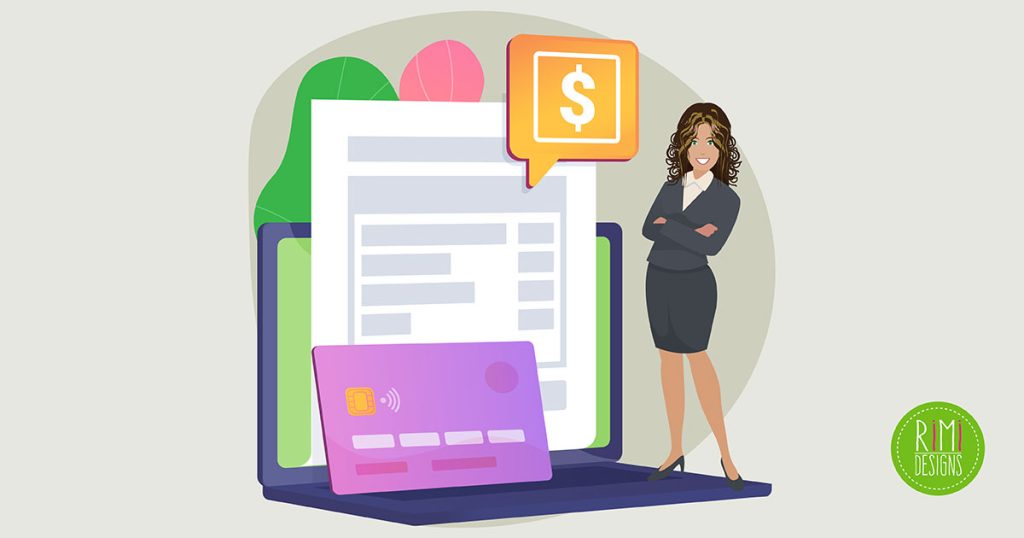
How to Manage Payments and Make Sure You Get Paid
Have you ever had trouble with a client who did not pay you for your work? Would you be able to manage this kind of situation? Even if it has never happened to you, this problem is more common than you think. Indeed, one of the most difficult aspects of working as a freelancer is making sure that clients pay on time.
Although this seems very easy, many freelancers don’t know how to organise a payment or how to face the problems which can arise with some clients. This article gives you some tips to decide the payment terms and to show you how to manage all the payment process after you have sent the invoice to the client.
Set the payment terms
The first thing you should always do is to make the payment terms clear. Indeed, payments are not all the same. They may differ for the due date, for the transaction method you choose or for many other reasons. So, let’s have a look at the different aspects you will have to take into consideration to set up an effective payment.
Payment due date
Whether you are creating a proposal or an invoice, you have to think carefully about the due date.
First of all, consider that when the sum of money is a large one, you should give enough time for your client to pay you. There is not a fixed value for “enough time”, but 30 days is a good starting point.
Alternatively, if the project you have to be paid for is a small one, you can opt for the “due upon receipt” payment, which means that clients pay you as soon as they receive the document.
Either way, if you decide to issue an invoice which is due in “X” days from the issue date, we suggest you clearly specify the due date on the paper.
Payment methods
There are different options you can use to get paid. We’ll have a look at the most common and safe alternatives.
- You can opt for online payment services such as PayPal, Stripe or Google Wallet, just to name a few. Here, the drawback is the presence of third-party fees which can considerably reduce the sum you will receive.
- Another method is wire transfer. It’s a very quick way to get paid but you will have to share some information, such as the number of your bank account, with the client. That’s why many people don’t like the wire transfer.
- Lastly, you can be paid through a credit or debit card. All you need is to have a merchant account ready to receive money.
As you can see, there are really a lot of systems you can use. The important thing is that, whichever method you choose, you provide all the necessary information for clients to pay you. Usually, the more precise you are, the more time you will save and the faster you will get paid.
Penalties
You should always consider the possibility of introducing a penalty, in case the client fails to pay on time. Here, you have to decide the amount of the fee, which generally is about 1% or 3% of the total cost and the delay time which will activate the fee.
Deposit
Before starting any new work, we suggest you get a deposit payment. In particular, this step is important when you are going to begin a project with a new client that you still don’t know. Indeed, there is nothing worse than working hard for free. There are two main ways to organise a deposit payment.
- The first one consists of invoicing for some weeks, usually one or two, of upfront work. Of course, you can only adopt this method if you are paid for your time.
- If your services have fixed prices, you can ask to have a percentage of that sum in advance.What’s important is that you always tell your clients that you will start working after receiving the deposit. This way, they will quickly give you the first part of the payment and you will be more reassured.
If you follow all the previous advice, you will be able to orientate yourself in the various aspects fundamental for creating a successful payment scheme. Nevertheless, planning a payment is just the first part of the remuneration procedure. Indeed, all that we have previously said may be useless if you are not able to manage the contact with the client after you have sent them the invoice.
So, let’s have a look at some tips you should follow in this second phase. First of all, after sending the invoice, you have to make sure that the document has reached its destination.
Confirm the terms with the client
Despite this being a very easy step, it really can make the difference in getting paid faster. After you have sent the invoice to the client, wait for 2-3 days and then try to make sure that the document has been received and read.
Indeed, a common problem is that many clients will receive the invoice and put it apart until the due date is imminent. Therefore, if there is a mistake, the payment will be obviously delayed.
So, if you make a phone call or send an email, you can directly check with the client if everything is alright and you can instantly solve any possible trouble. This simple action will also lead clients to pay you faster because, after a call, your invoice will be stuck in their mind.
Watch for the payment
After you have made sure that there are no problems with the invoice, you only have to wait for the deserved payment. If you have followed the previous steps, you should have no problems in getting paid. Hence, keep an eye on your bank account.
In case you don’t receive the payment within the agreed time, you should immediately contact the client through an email to understand the reason of the delay and to show that the payment is a serious aspect of your professional work.
Moreover, you should try to encourage them to pay as soon as possible. However, sometimes clients are a bit undisciplined and, even after a reminder, they may not pay you on time.
Manage overdue payments
So, if the money still doesn’t arrive? What should you do? First of all, you should stay calm and manage the situation with tranquility. We suggest you sending an email to the client and reattach the invoice and, with politeness, explain that the due date has passed. You may also ask when you can expect to receive the payment.
In the worst scenario, the client will not pay even after receiving the second invoice. In this case, you should call and speak personally with them. The key point of this moment is to avoid a direct conflict with your client because, losing a customer is the last thing you need.
Make positive use of late payment penalties
If you have included late payment penalties on the invoice, you can use them in an uncommon and smart way. Unless the amount of money you have to be paid is a large one, imposing the payment of a penalty will deteriorate the relationship with your client. That’s why we suggest you to follow another path.
You will get better results if you offer to cancel the penalty in exchange for a rapid payment by the end of the day or within the following 12-24 hours. The benefits of this approach are double. First, you will get your money in a short time and, second, it will seem as if you have done the client a favour.
Conclusion
Managing a payment is not always easy but there are some tips which can help you. The most important advice that you have to keep in mind is that you should always show firm behaviour with the client but, at the same time, you should avoid being rude.
Although receiving a payment with a delay will upset you, losing the possibility of further projects for the client may be even worse.
SOURCE: Onextrapixel



